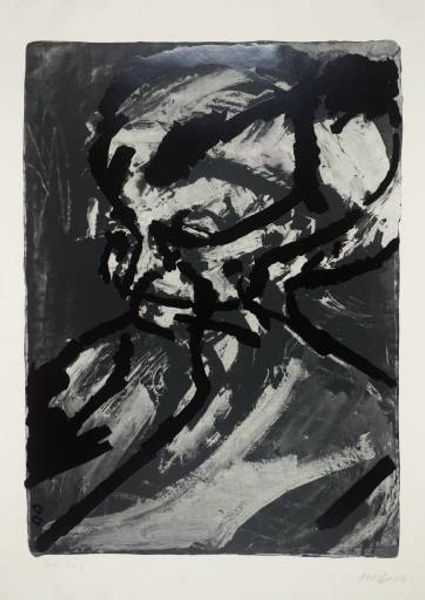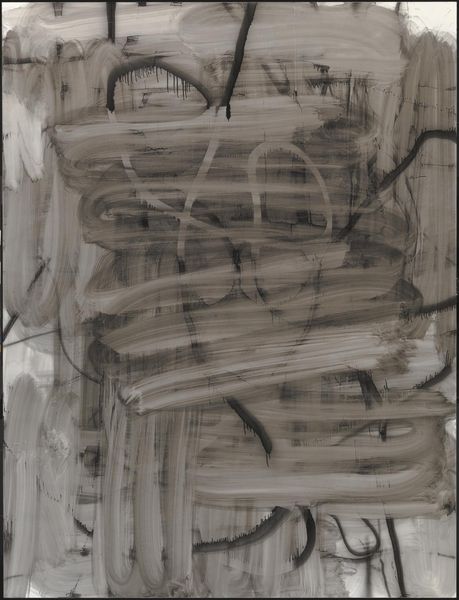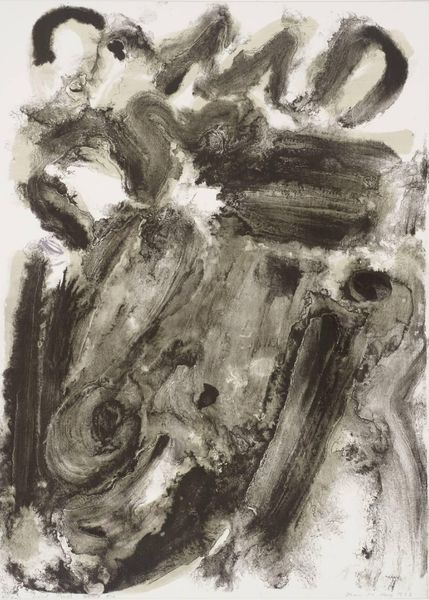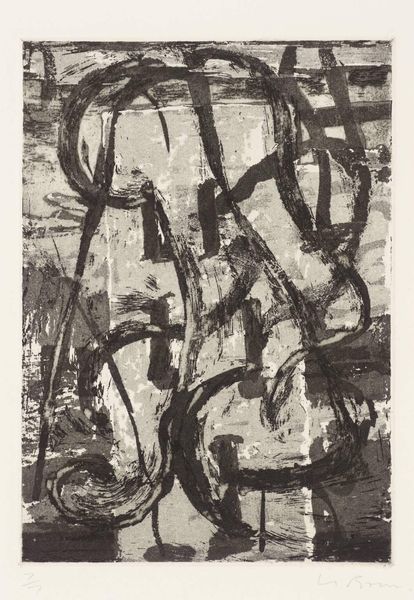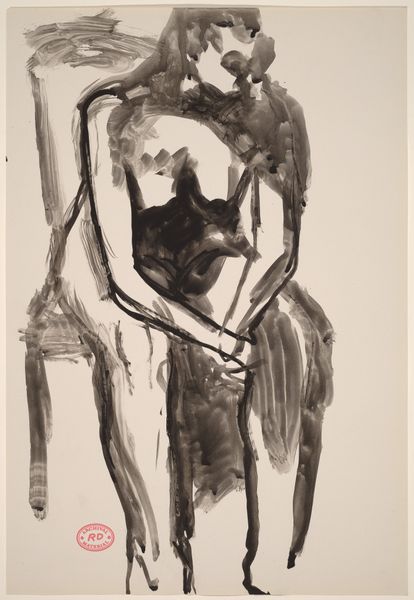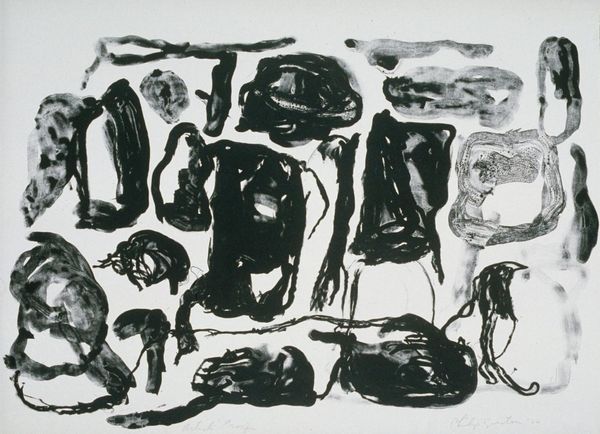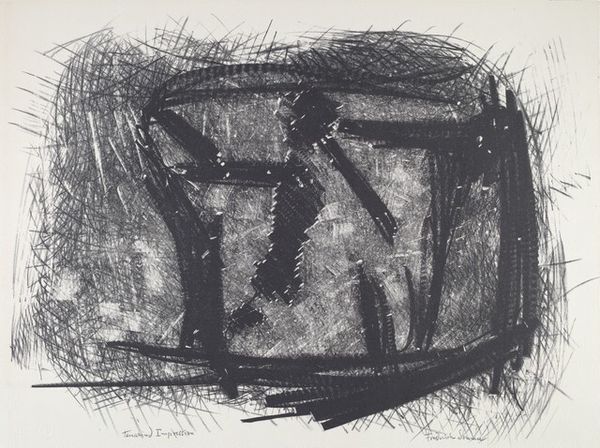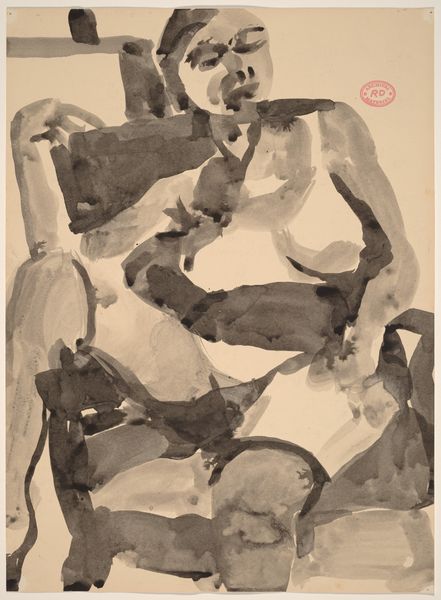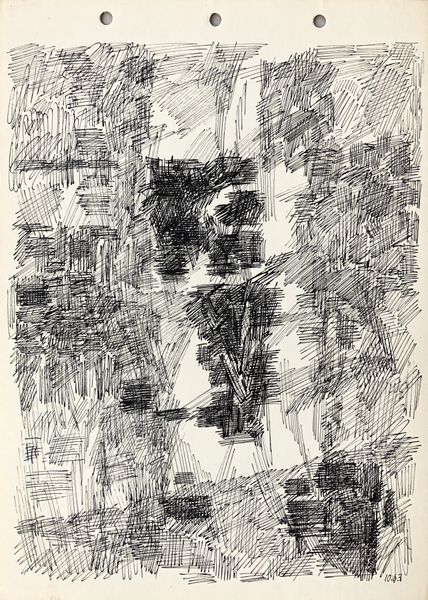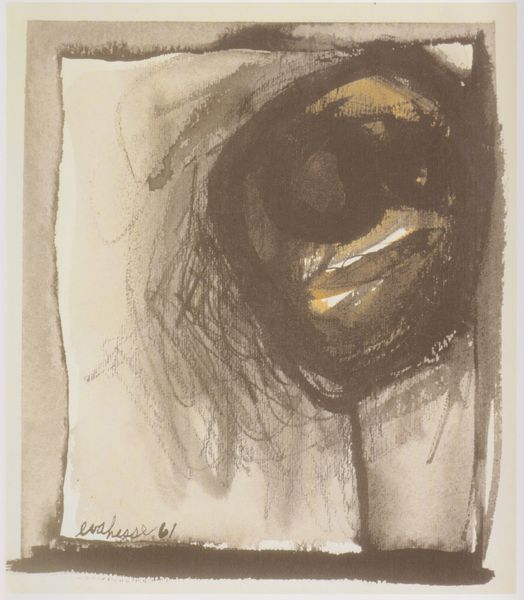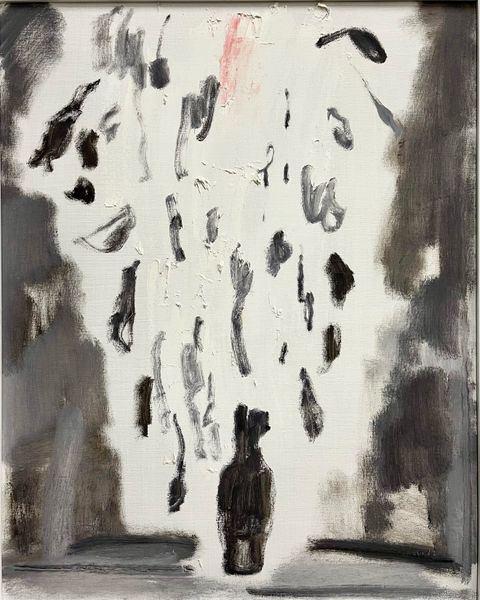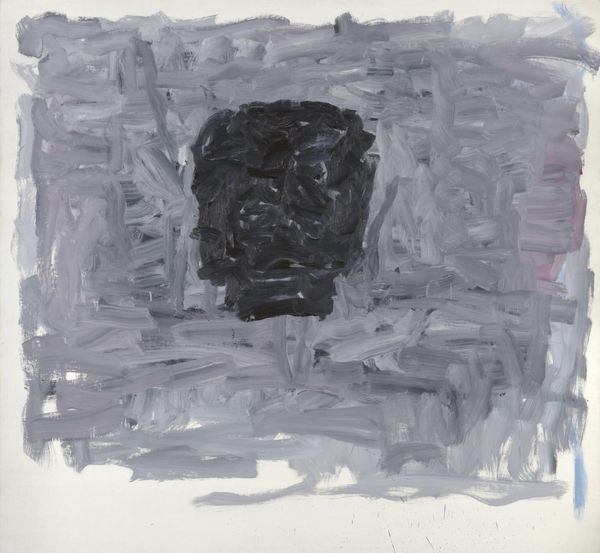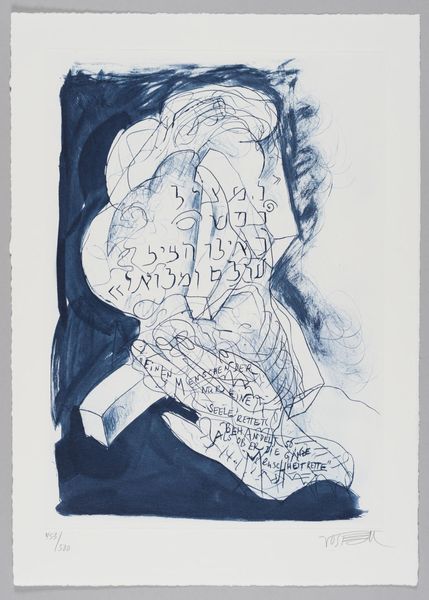
Dimensions: support: 1295 x 965 mm frame: 1352 x 1024 x 76 mm
Copyright: © ADAGP, Paris and DACS, London 2014 | CC-BY-NC-ND 4.0 DEED, Photo: Tate
Curator: Here we have Antonio Saura’s "Imaginary Portrait of Goya," currently residing in the Tate Collections. It’s quite large, over a meter tall. What strikes you? Editor: The raw materiality is immediately apparent; the thick, gestural brushstrokes convey a sense of violent energy. It feels unresolved, like a work in progress. Curator: Yes, the visible brushwork certainly contributes to that feeling. Saura’s use of a restricted palette—primarily grays, blacks, and whites—further emphasizes the underlying structure. Editor: I wonder about Saura’s process. Did he work quickly, intuitively? The application of paint suggests a rapid, almost frantic, pace. The canvas itself seems to be actively resisting the image. Curator: Perhaps. It's intriguing how Saura invokes Goya, a master of portraiture, only to deconstruct the form. Saura abstracts Goya's essence through these frenetic marks. Editor: I agree. The portrait is less about resemblance and more about capturing Goya's turbulent spirit. The rough, unrefined quality feels very intentional, disrupting traditional notions of artistic skill. Curator: A fitting tribute, then. Saura’s Goya remains a powerful exploration of form and a provocative meditation on artistic legacy. Editor: Indeed. I’m left contemplating the relationship between the artist, his materials, and the historical figure he seeks to represent. A rich dialogue, indeed.
Comments
tate 6 months ago
⋮
http://www.tate.org.uk/art/artworks/saura-imaginary-portrait-of-goya-t00866
Join the conversation
Join millions of artists and users on Artera today and experience the ultimate creative platform.
tate 6 months ago
⋮
Goya’s painting of a dog’s head peering upwards from behind a slope, painted directly onto the walls of his house, was the inspiration for Saura’s Imaginary Portrait of Goya. Saura explained: ‘I have always thought of this head as Goya himself watching “something happen”’. While evoking a great national tradition, this portrait may have been quietly subversive. Goya was famous as a witness to the corruption and barbarities of the Napoleonic invasion. Saura, painting at a time when General Franco still ruled Spain, invoked this spirit but turned the watching head outwards on the contemporary world. Gallery label, July 2012
